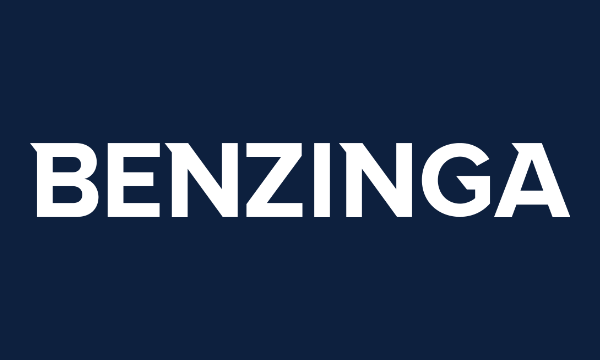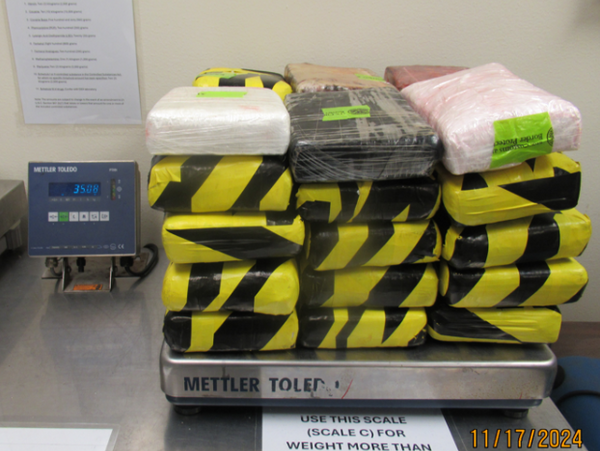
December S&P 500 E-Mini futures (ESZ25) are down -0.23%, and December Nasdaq 100 E-Mini futures (NQZ25) are down -0.14% this morning as investors grew anxious with the deadline to avert a U.S. government shutdown approaching.
Democratic leaders and President Trump engaged in last-minute talks on Monday but failed to reach a deal to prevent a shutdown. U.S. lawmakers have until midnight to pass a federal spending bill. Vice President JD Vance said he thinks the U.S. government is headed toward a shutdown. Many federal operations will pause, and nonessential employees will be furloughed or fired in the event of a shutdown. Notably, Friday’s payroll report will be postponed if the Department of Labor follows an operational contingency plan outlined earlier this year.
Later today, investors will focus on the latest reading on U.S. job openings and comments from Federal Reserve officials.
In yesterday’s trading session, Wall Street’s main stock indexes closed higher. Chip stocks advanced, with GlobalFoundries (GFS) and Micron Technology (MU) rising over +4%. Also, Applovin (APP) climbed more than +6% and was the top percentage gainer on the Nasdaq 100 after Phillip Securities initiated coverage of the stock with an Accumulate rating and $725 price target. In addition, Merus N.V. (MRUS) jumped nearly +36% after Genmab agreed to acquire the company for about $8 billion in cash. On the bearish side, Carnival (CCL) slid about -4% even as the company posted better-than-expected FQ3 results and raised its full-year adjusted EPS guidance.
Economic data released on Monday showed that U.S. pending home sales climbed +4.0% m/m in August, stronger than expectations of +0.2% m/m and the biggest increase in 5 months.
Cleveland Fed President Beth Hammack told CNBC’s Squawk Box Europe on Monday that the U.S. central bank must keep a restrictive monetary policy stance to bring inflation down to its 2% target. “My forecast is that we’re going to remain above target for probably the next one to two years, and not really getting back down to our objective of 2% until the end of 2027 or early 2028,” Hammack said. At the same time, St. Louis Fed President Alberto Musalem said he is open to additional interest rate cuts, but emphasized that policymakers should proceed carefully, with inflation still above the central bank’s target. In addition, New York Fed President John Williams said that inflation risks have diminished, while employment risks have increased. However, he did not indicate whether he might support another rate cut in October.
Meanwhile, U.S. rate futures have priced in a 90.3% probability of a 25 basis point rate cut and a 9.7% chance of no rate change at the next central bank meeting in October.
In tariff news, President Trump signed a proclamation on Monday to impose 10% tariffs on imported timber and lumber and 25% tariffs on upholstered wooden furniture products and kitchen cabinets, effective October 14th. Tariffs on furniture products will increase to 30% at the beginning of 2026, and tariffs on cabinets will rise to 50%, according to an executive order.
Today, all eyes are on the U.S. JOLTs Job Openings figures, set to be released in a couple of hours. Economists, on average, forecast that the August JOLTs Job Openings will arrive at 7.190 million, compared to the July figure of 7.181 million.
Investors will also focus on the U.S. Conference Board’s Consumer Confidence Index, which came in at 97.4 in August. Economists expect the September figure to be 96.0.
The U.S. S&P/CS HPI Composite - 20 n.s.a. will be reported today. Economists expect the July figure to ease to +1.7% y/y from +2.1% y/y in June.
The U.S. Chicago PMI will be released today as well. Economists forecast the September figure at 43.4, compared to the previous value of 41.5.
In addition, market participants will hear perspectives from Fed Vice Chair Philip Jefferson, Boston Fed President Susan Collins, Chicago Fed President Austan Goolsbee, and Dallas Fed President Lorie Logan throughout the day.
On the earnings front, shoemaker Nike (NKE) and payroll processing firm Paychex (PAYX) are set to report their quarterly figures today.
In the bond market, the yield on the benchmark 10-year U.S. Treasury note is at 4.130%, down -0.27%.
The Euro Stoxx 50 Index is down -0.31% this morning as investors weigh the potential impact of a U.S. government shutdown. Sentiment was also hampered by trade concerns following U.S. President Donald Trump’s latest tariffs. Energy stocks led the declines on Tuesday, tracking the drop in crude oil prices on expectations of increased OPEC+ supply. Chemical and automobile stocks also lost ground. Preliminary data from France’s statistics agency released on Tuesday showed that the country’s annual inflation rate accelerated in September, despite a political stalemate weighing on economic activity, indicating that the European Central Bank will continue to hold off on additional interest rate cuts. At the same time, preliminary data showed that Italy’s annual inflation rate unexpectedly held steady in September. In addition, data showed that the number of unemployed people in Germany rose more than expected in September. Investors now await preliminary inflation data from Germany due later in the session. In corporate news, ASOS Plc (ASC.LN) slumped over -8% after the online fashion retailer cautioned that its full-year revenue would fall short of market expectations.
U.K. GDP, France’s CPI (preliminary), Germany’s Retail Sales, Germany’s Unemployment Change, Germany’s Unemployment Rate, and Italy’s CPI (preliminary) data were released today.
U.K. GDP has been reported at +0.3% q/q and +1.4% y/y in the second quarter, compared to expectations of +0.3% q/q and +1.2% y/y.
The French September CPI fell -1.0% m/m and rose +1.2% y/y, weaker than expectations of -0.9% m/m and +1.3% y/y.
The German August Retail Sales unexpectedly fell -0.2% m/m, weaker than expectations of +0.6% m/m.
The German September Unemployment Change stood at 14K, weaker than expectations of 8K.
The German September Unemployment Rate was 6.3%, in line with expectations.
The Italian September CPI fell -0.2% m/m and rose +1.6% y/y, weaker than expectations of -0.1% m/m and +1.7% y/y.
Asian stock markets today closed mixed. China’s Shanghai Composite Index (SHCOMP) closed up +0.52%, and Japan’s Nikkei 225 Stock Index (NIK) closed down -0.25%.
China’s Shanghai Composite Index closed higher today as optimism surrounding the country’s AI development outweighed concerns about the pace of economic recovery. Semiconductor stocks climbed on Tuesday after DeepSeek unveiled a new experimental model it claims trains more efficiently and processes longer text sequences better than earlier versions. An official survey released on Tuesday showed that China’s manufacturing activity increased in September, but remained in contraction territory for a sixth month due to weak market demand. Subdued demand was also apparent in services as the official non-manufacturing PMI, which covers services and construction, unexpectedly declined in September. At the same time, private surveys showed that China’s factory and service activities continued to expand in September. ING economist Lynn Song said that Beijing would need further policy support as growth momentum slowed in the third quarter. China’s state planner said Monday it is weighing a new policy tool worth 500 billion yuan ($70.2 billion) to replenish funding for local government investment projects. In corporate news, ZG Group jumped over +14% in Hong Kong after announcing plans to repurchase up to 107.11 million of its Class A shares. All eyes are now on China’s Golden Week holiday, with attention on spending data to assess the strength of domestic demand. Investors are also eagerly awaiting the Communist Party’s Fourth Plenum in October, where the next five-year plan will help gauge the government’s future policy direction.
The Chinese September Manufacturing PMI stood at 49.8, stronger than expectations of 49.6.
The Chinese September Non-Manufacturing PMI came in at 50.0, weaker than expectations of 50.3.
The Chinese September RatingDog Manufacturing PMI arrived at 51.2, stronger than expectations of 50.3.
The Chinese September RatingDog Services PMI came in at 52.9, stronger than expectations of 52.4.
Japan’s Nikkei 225 Stock Index closed lower today as investors digested weak economic data from the country. Energy and steel stocks led the declines on Tuesday. Automobile stocks also dropped due to a stronger yen. Government data released on Tuesday showed that Japan’s factory output fell more than expected in August due to the impact of tariffs, while retail sales fell for the first time in over three years, further complicating the Bank of Japan’s task of balancing growth and inflation. Moody’s Analytics economist Stefan Angrick said the data will likely keep the BOJ on hold for now, adding that he anticipates a rate hike in January unless the yen weakens sharply. Meanwhile, a summary of opinions from the BOJ’s September policy meeting released on Tuesday showed that policymakers discussed the possibility of raising interest rates in the near term, with some indicating that the timing for such a move may be approaching. Many opinions expressed at the meeting emphasized the need for vigilance over rising inflationary pressures, signaling a gradual hawkish shift among the board. In other news, Japan’s 2-year government bond auction attracted the weakest demand since 2009 amid growing speculation that the central bank may raise interest rates as early as October. Investors are now shifting their focus to the central bank’s Tankan survey of business sentiment due on Wednesday for more clues on the path of monetary policy. Investors are also awaiting speeches from BOJ policy board members, with Governor Kazuo Ueda’s remarks on Friday being the highlight. The Nikkei Volatility Index, which takes into account the implied volatility of Nikkei 225 options, closed down -1.33% to 25.24.
The Japanese August Industrial Production (preliminary) fell -1.2% m/m, weaker than expectations of -0.7% m/m.
The Japanese August Retail Sales unexpectedly fell -1.1% y/y, weaker than expectations of +1.0% y/y.
The Japanese August Housing Starts fell -9.8% y/y, weaker than expectations of -5.2% y/y.
Pre-Market U.S. Stock Movers
Spotify Technology (SPOT) fell over -2% in pre-market trading after Goldman Sachs downgraded the stock to Neutral from Buy.
Vail Resorts (MTN) slid more than -2% in pre-market trading after the mountain leisure and hospitality company reported weaker-than-expected FQ4 results.
Firefly Aerospace (FLY) plunged over -12% in pre-market trading after the booster stage of an Alpha rocket exploded during a pre-flight test in Texas.
Wolfspeed (WOLF) jumped more than +23% in pre-market trading after the company announced it had emerged from Chapter 11 bankruptcy.
EchoStar (SATS) climbed over +6% in pre-market trading after Bloomberg reported that Verizon was in talks with the company about purchasing some of its wireless spectrum.
You can see more pre-market stock movers here
Today’s U.S. Earnings Spotlight: Tuesday - September 30th
Nike (NKE), Paychex (PAYX), Lamb Weston Holdings (LW), United Natural Foods (UNFI), Glimpse Group (VRAR).







